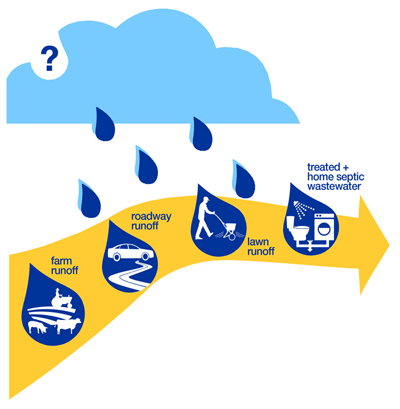Watersheds
What is a watershed?
It’s a land area that channels rainfall and snowmelt to creeks, streams, and rivers, and eventually to outflow points such as reservoirs, bays, and the ocean.
The size of a watershed (also called a drainage basin or catchment) is defined on several scales—referred to as its Hydrologic Unit Codes (HUC)—based on the geography that is most relevant to its specific area. A watershed can be small, such as a modest inland lake or a single county.
Conversely, some watersheds encompass thousands of square miles and may contain streams, rivers, lakes, reservoirs, and underlying groundwater that are hundreds of miles inland. The largest watershed in the United States is the Mississippi River Watershed, which drains 1.15 million square miles (2,981,076 square kilometers) from all or parts of 31 U.S. states and two Canadian provinces stretching from the Rockies to the Appalachians!
Water from hundreds, and often thousands, of creeks and streams flow from higher ground to rivers that eventually wind up in a larger waterbody. As the water flows, it often picks up pollutants, which may have sinister effects on the ecology of the watershed and, ultimately, on the reservoir, bay, or ocean where it ends up.
Not all water flows directly to the sea, however. When rain falls on dry ground, it can soak into, or infiltrate, the ground. This groundwater remains in the soil, where it will eventually seep into the nearest stream. Some water infiltrates much deeper, into underground reservoirs called aquifers. In other areas, where the soil contains a lot of hard clay, very little water may infiltrate. Instead, it quickly runs off to lower ground.
Rain and snowmelt from watersheds travel via many routes to the sea. During periods of heavy rain and snowfall, water may run onto and off of impervious surfaces such as parking lots, roads, buildings, and other structures because it has nowhere else to go. These surfaces act as "fast lanes" that transport the water directly into storm drains. The excess water volume can quickly overwhelm streams and rivers, causing them to overflow and possibly result in floods.
https://oceanservice.noaa.gov/facts/watershed.html, accessed on 01/31/2023

